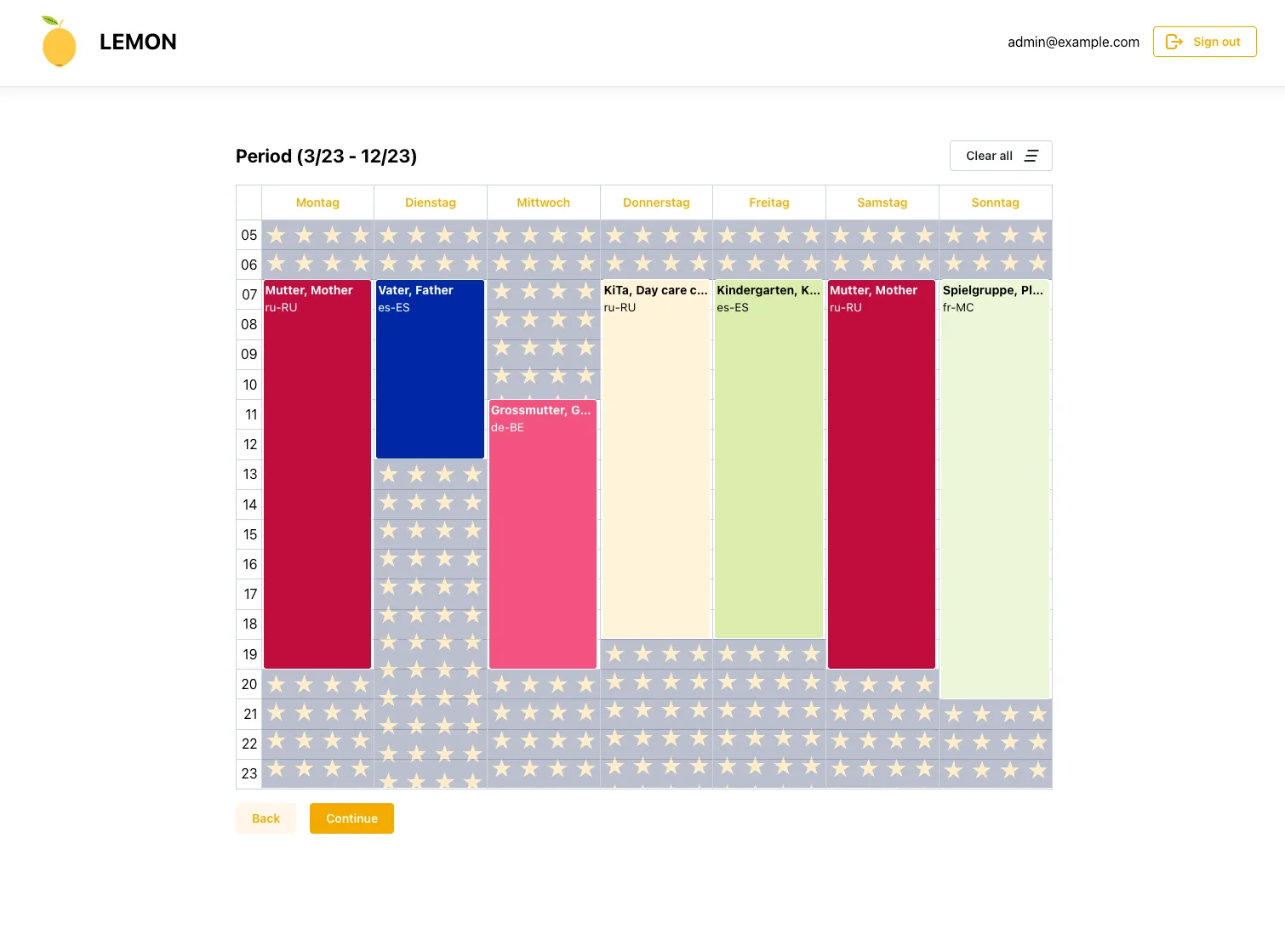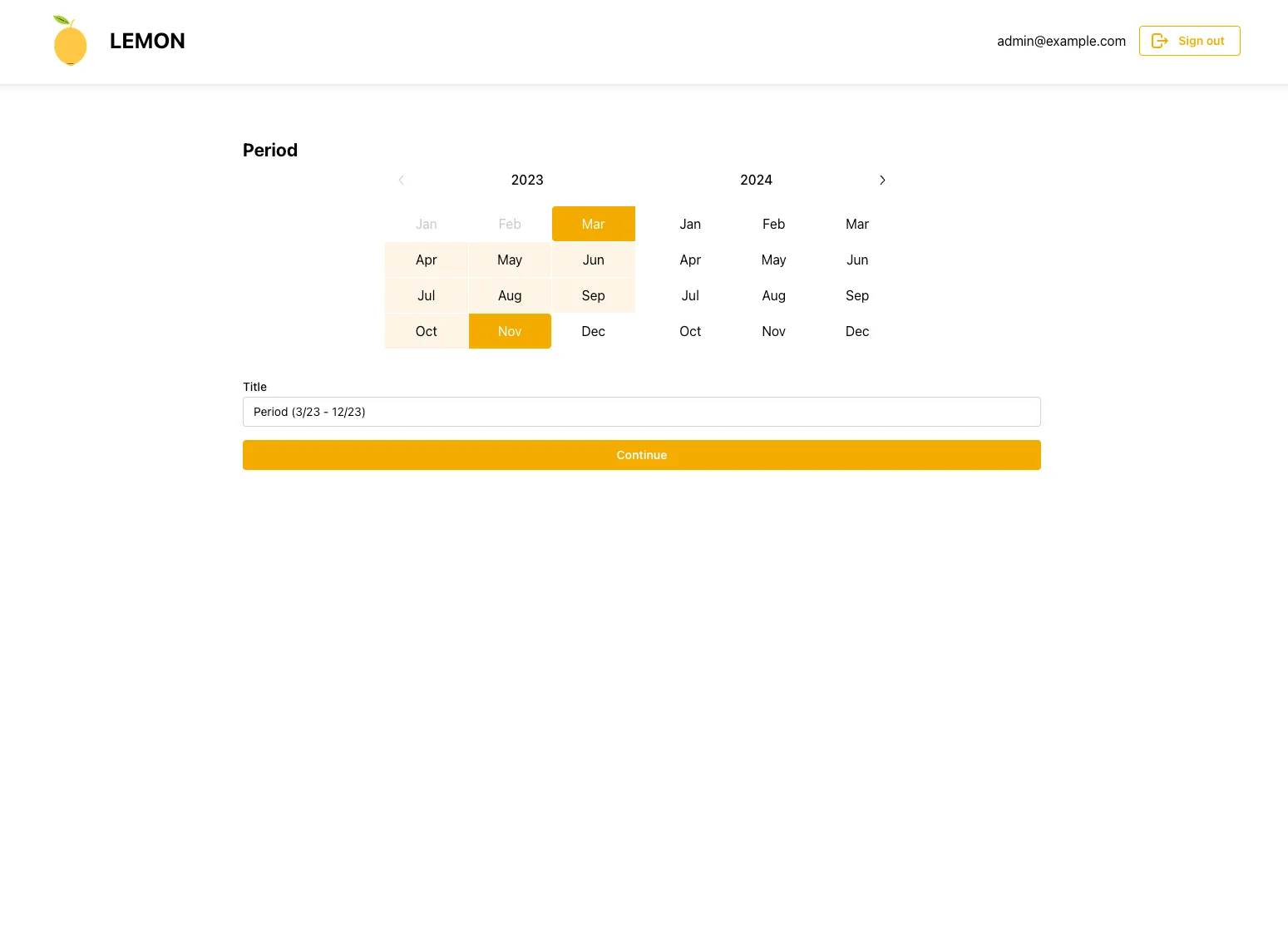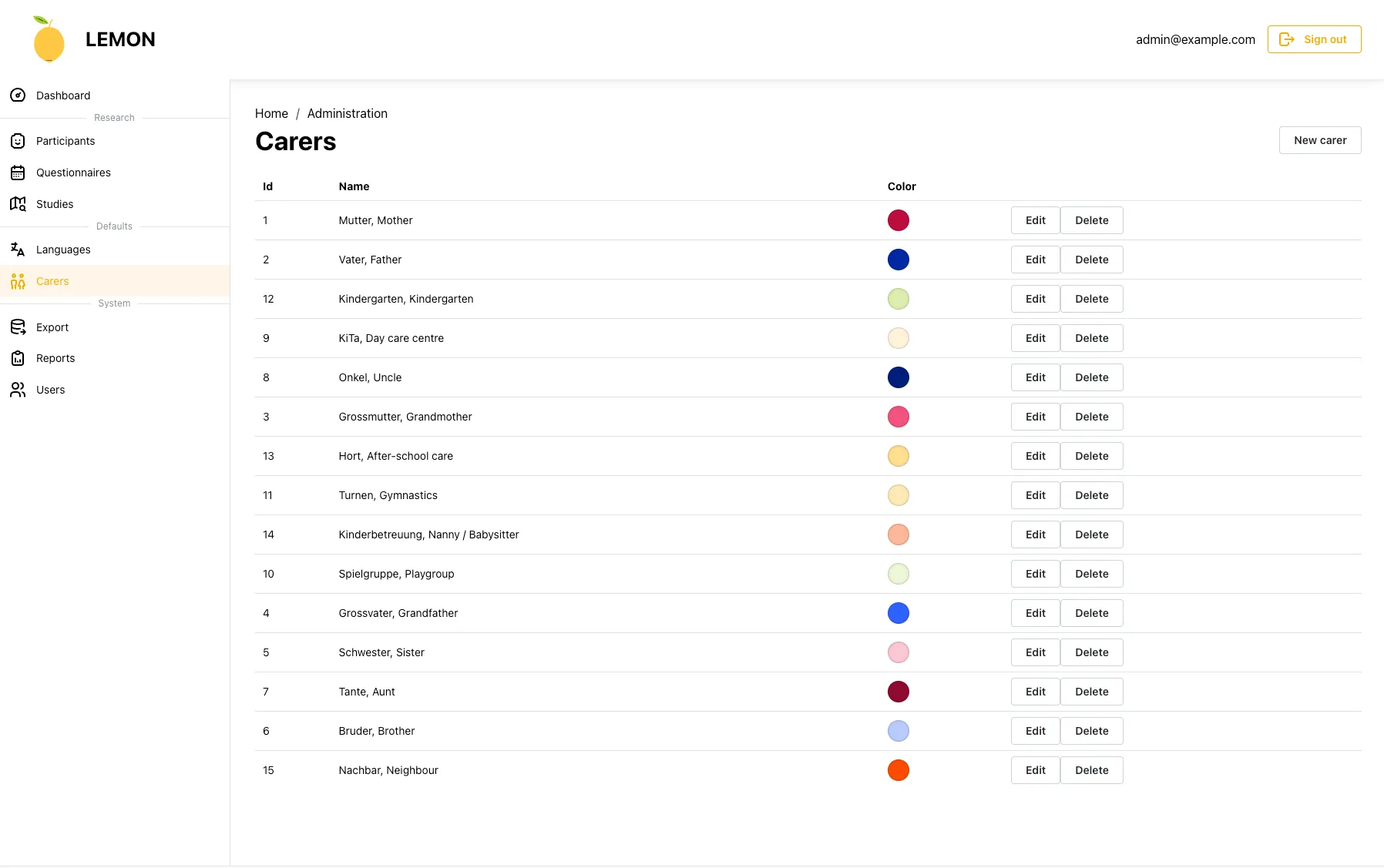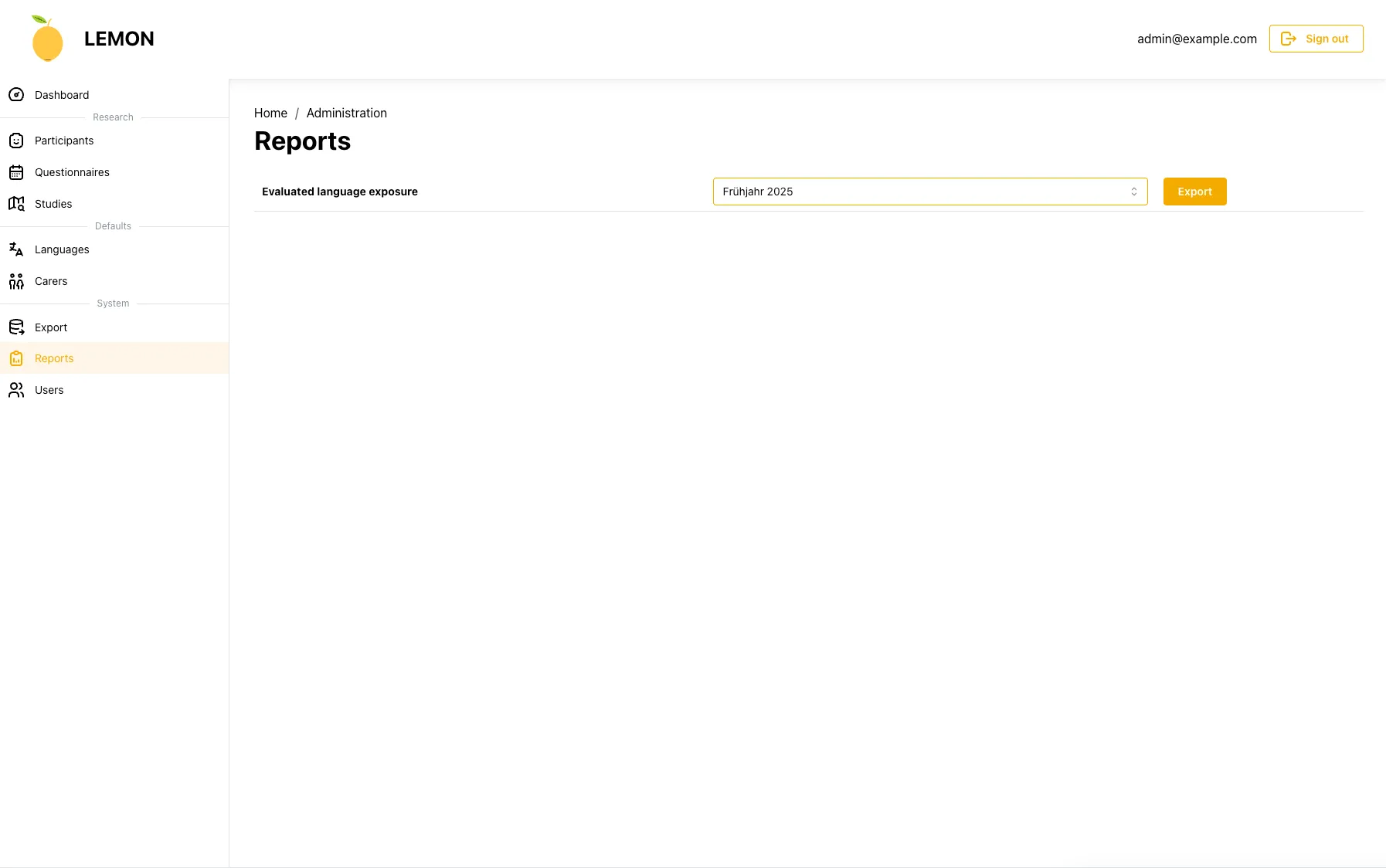Gather language exposure data
Efficient documenting children's language exposure by carer, language and time.
Data Collection Features
-
Calendar interface
A dynamic weekly calendar interface that allows users to track, create, and modify overlapping language exposure entries.
-
Easy to select time period
A seamless time period selection feature allows users to define specific months or years for managing language exposure data.
-
Auto detect gaps
An automatic gap detection feature identifies missing language exposure periods, notifies users, and offers options to highlight or proceed despite gaps.
-
Recurring entries
Ability to create recurring entries for regular langage exposure events on weekly bases only (e.g. every second week).
More functions
- Optional comments
- Customizable carer information
- Historical entires are saved




Administration Features
-
Entry for studies
Allow administrators to create and manage questionnaire series and participants linked to specific studies.
-
Default data management
Store the data about carers' background information.
-
Export raw data to CSV
The collected raw data are allowed to be exported into CSV or SQL formats.
-
Consolidate data into reports
Consolidate data into reports which contains participants ID and their language exposure information for further analysis.
More functions
- User management
- Data import
- Historical entires are saved




About
As a part of researching social-cognitive development of humans, Prof. Dr. Moritz Daum, Dr. Stephanie Wermelinger and their team at the University of Zurich are researching multilingual development in children. To improve the efficiency of gathering the necessary data, they needed a tool that could help them with this task.
Resulting from this need, the idea of Quassel was created. Collaborating closely with the University of Zurich, openscript Ltd. brought the software to life and is now being used by the name LEMON in the research project.
If you are interested in using the software for your own research project, feel free to reach out to the respective contact people. Quassel itself is an open-source project and can be found on GitHub.